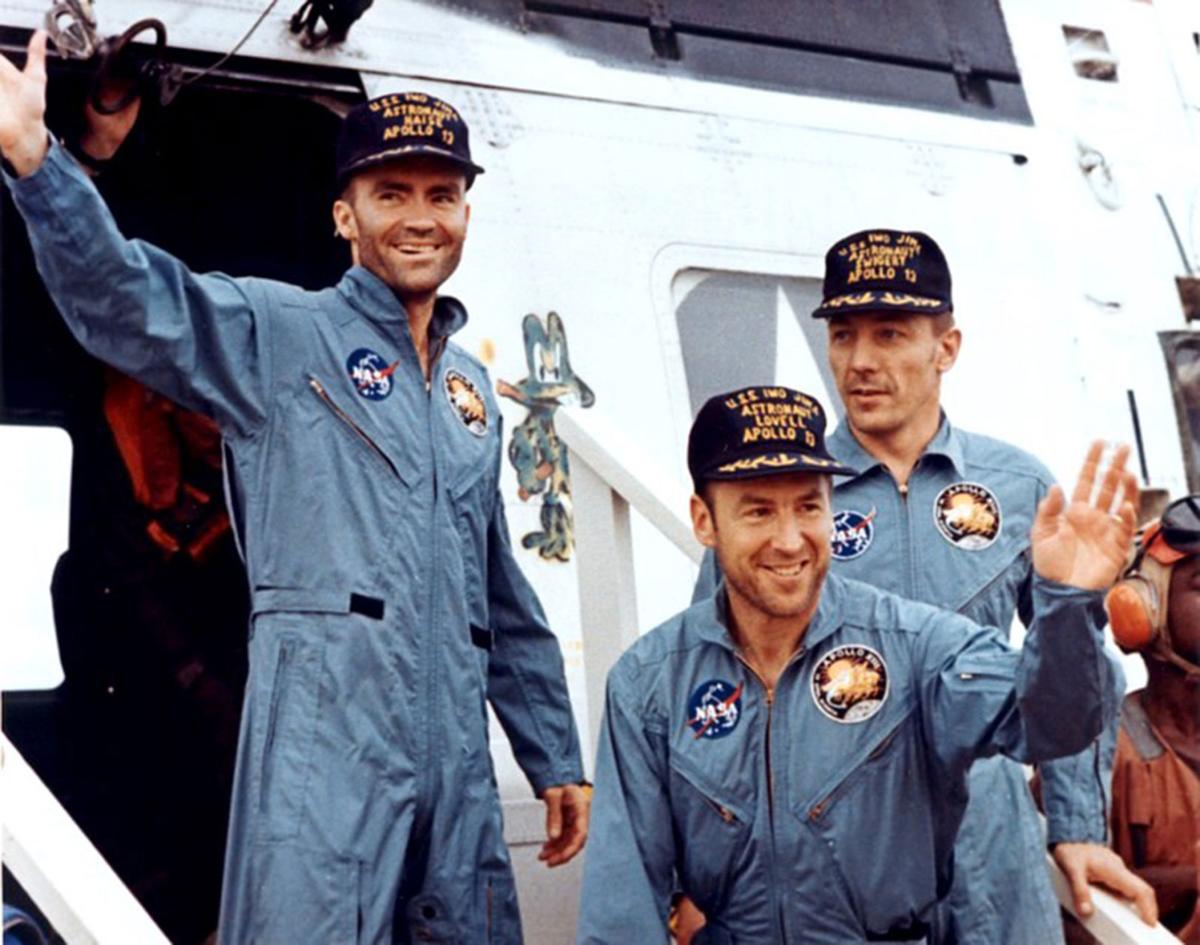Everyday Leadership Series (22) - Leadership lessons from Apollo 13 - A Successful failure

The other night, I had the opportunity to see Tom Hanks again in the movie Apollo 13. It is a gripping story, the chronicles of Apollo 13.
For those not old enough to have lived through it, a story of shooting for a landing on the moon, suffering an explosion on the spacecraft on the way to the moon, not landing on the moon, and then limping home to Earth with a mere 1% re-entry angle to save the three lives on the spacecraft. In other words, a “successful failure.”
But, it wasn’t a failure. It was a successful demonstration of leadership in a crisis, with teamwork between “headquarters” in Houston and the “field” in the spacecraft.
From understanding the plight of the spacecraft, to knowing what needed to be done, to creating a CO2 converter out of materials only on the spacecraft, the flight is a clear lesson in how to do crisis management.

Here are the lessons:
- A strong leader defines the parameters. In spite of all the negative talk, the leader defines the mission. “Failure is not an option.”
- A strong leader respects the judgment of the specialty areas. “From my position, that’s the only answer.” And, “without power, the crew has nothing.” Too often in today’s corporate environment, we don’t respect the business judgment of those who are actually doing the work. Right?
- Creativity is defined by constraints. To create an additional CO2 converter, “we need to build a converter from these parts.” A life-saving piece of equipment built out of what was on the spacecraft. Start with duct tape.
- We think while we act. It wasn’t a situation where it was “Act, act, act.” It was “if we do this, another thing will happen and people will die.” The consequences of our actions here on the ground meant something. Critical thinking of the consequences of our actions took place in the middle of the crisis.
- People make the difference. In the end, there were no processes, no six sigma insights, no ISO9000 following of processes. What was in the book was important — but a reference. What was needed was “what will work now?” Only “executive intelligence” can provide that answer.
Of course, businesses are not always in crisis. But that’s not the point. The points are:
- How often does your leadership define the parameters of your work?
- How often does your leadership respect — and follow — your good business judgment as the person in the trenches doing the work?
- How often are we to simply solve a problem without explanation of the constraints that limit our options — and increase our creativity?
- How often do we take the moment to consider the consequences of our actions? How often do we simply look at the process flows, the handbook that tells us what to do, and shut down the very Cubicle Warriors working the process every day?
You see, in the end, it is a question of being a leader while trusting the judgment of the very people who are working for you.
And in my experience, the trust is simply not there.

What are the leadership lessons from Apollo 13’s successful failure?
Prioritize and Communicate — NASA didn’t worry about anything other than saving the crew. The lunar landing objective was abandoned within minutes of the initial explosion. And everyone on the gigantic NASA team understood it.
Experience Takes Experience— There’s no substitute for hours and hours of actually doing something. It’s the best preparation for catastrophe. NASA’s people had been in the lunar-landing business for 9 years when the explosion occurred aboard Apollo 13.
Training is the Next Best Thing— There are things you can’t experience until they happen. But you can run simulations and training exercises. NASA trained and trained and trained. (My brother was in the U.S. Navy and once told me about the harsh conditions under which sailors were trained to fight shipboard fires. I was astounded. But the one time he had to fight a major fire aboard ship, he and every other sailor fell right into doing the things they had been trained to do. The fire was extinguished and no one got hurt.)
Assess and Manage Risk — When you are doing something as risky as sending people in sealed containers attached to explosives into space, you’d better have pretty darn good risk management techniques. NASA had to adjust on the fly (pun intended) during Apollo 13, but many of its improvisations were worked out in advance because NASA had done a good job of identifying many of its risks.
I had the privilege of meeting Jim Lovell soon after the movie Apollo 13 came out in 1995. He was doing a speaking tour, usually to business audiences, about the kinds of things I mentioned above. Lovell is a rare creature: a true American hero. He’s funnier, cooler, more attractive, and braver than the movie star who played him in the movie. (I bet Tom Hanks would be the first person to agree with me on that.) At the time of the Apollo 13 mission, Lovell was America’s No. 1 pilot — he’d been in space more often than anyone else and still is the only man to travel to the moon twice.
According to his book, Lost Moon, as Apollo 13’s capsule landed in the ocean and the astronauts saw water running down the outside of their portholes, Lovell quietly pronounced the end of the successful failure: “Fellows, we’re home.”
Thanks for reading my blog.
Dr. Deepak A. Patil
CEO, Lead ThySelf



Comments
Post a Comment